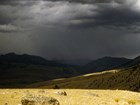Looking to dive deeper into learning about wildland fire and how it is managed in the national parks?
-
Article 1: Wildland Fire: Incident Command System

The Incident Command System, or ICS, is a system designed to manage any size of wildland fire incident from beginning to end, until the requirement for management no longer exists. As a result of those fires, a need was identified to develop a system whereby different agencies could work together toward a common goal in an effective and efficient manner. Read more
-
Article 2: Wildland Fire Incident Command System Levels
The Incident Command System (ICS) is flexible, scaling up or down as complexity changes and the needs of the incidents change. Type 5 is the least complex, while Type 1 is the most complex. The National Park Service supports and participates in interagency teams at both national and geographical area levels. Read more
-
Article 3: Researching the Effects of Wildland Fire

Researching the effects of wildfire and prescribed fire is a vital element of the overall National Park Service Wildland Fire Program. The science informs decision-making and over time change and trends are tracked and documented in park ecosystems. Read more
-
Article 4: National Wildfire Preparedness Levels

National wildfire preparedness is typically described in five levels with regards to fire activity and resources committed. The National Multi-Agency Coordination Group establishes preparedness levels throughout the year to help ensure that firefighting resources are ready to respond to new incidents. Preparedness levels are dictated by burning conditions, fire activity, and especially resource availability. Read more
-
Article 5: Wildland Fire Spread and Suppression

There are three general patterns of fire spread: ground, surface, and crown fires. Learn how these patterns are different from one another but can also be related, and how suppression methods vary based on spread. Read more
-
Article 6: Wildland Fire Management Personnel
It takes many different types of people with various skills to manage a fire. Fire crews are the backbone of the fire suppression effort. Crews are differentiated between Types 1, 2, and 3 based on experience, leadership, and availability. Other types of fire crews include interagency and NPS hotshot crews, wildland fire modules, helitack crews, smokejumpers, and engine crews. Overhead personnel provide behind the scenes support for firefighters. Read more
-
Article 7: Wildland Fire: Fireline Construction

Fireline is a break in fuel, made by cutting, scraping, or digging with a bulldozer or hand tools. All fuels are removed and the surface is scraped to mineral soil on a strip 6 inches to 3 feet wide, depending upon the fuel and slope. Often a break in the weather allows workers to encircle and contain the fire. Then the hard, dirty work of mop up begins to bring the fire under control. Firefighting resources are released (demobilized) as they are no longer needed. Read more
-
Article 8: Wildland Fire Engines

Wildland fire engines can be large or small depending on the operational needs. They are used to support wildfire response efforts as well as prescribed fire operations. Read more
-
Article 9: Learning about Fire Ecology Basics

Fire ecology concepts include the fire dependence of some ecosystems; fire history, or how often fires occur in a given area; and fire regime, the different roles fire plays in different ecosystems. Read more
-
Article 10: Wildland Fire and Ecosystems
Some ecosystems have adapted over time to wildland fire. How does wildland fire interact with different forests, woodlands, and grasslands? Read more
-
Article 11: Wildland Fire Behavior

Fire is influenced by many factors. When more moisture is present, fire threat is reduced. A fuel’s composition determines its flammability. Weather conditions also contribute to fire behavior. Fires are classified as either natural or human-caused. A wildfire is usually started by lightning, lava, or people. A prescribed fire is ignited by humans under predetermined conditions and is carefully monitored. Prescribed fires help manage certain types of landscapes. Read more
-
Article 12: Wildland Fire: Cultural Interpretations of Fire and Human Use

Fire has been a benevolent, mystical, and religious symbol throughout the world. Fire was associated with rebirth in mythology, and is now recognized as an instrument of change for healthy ecosystems. American Indians have always had a great respect for fire. Historically, many American Indians used fire to shape their environment and improve hunting. The cumulative effects of the thousand years of burning had profound impacts on the landscape that European settlers found. Read more
-
Article 13: Wildland Fire: Weather Watches & Warnings
A Fire Weather Watch is issued when the potential for severe fire weather exists within 12-24 hours. A watch is used when there is a relatively low probability of occurrence. A Red Flag Warning is issued to indicate a relatively high probability of severe fire weather within 12 hours. The fire danger is usually high to extreme for both the watch and warming. A Red Flag Warning may or may not be preceded by a Fire Weather Watch. Read more

